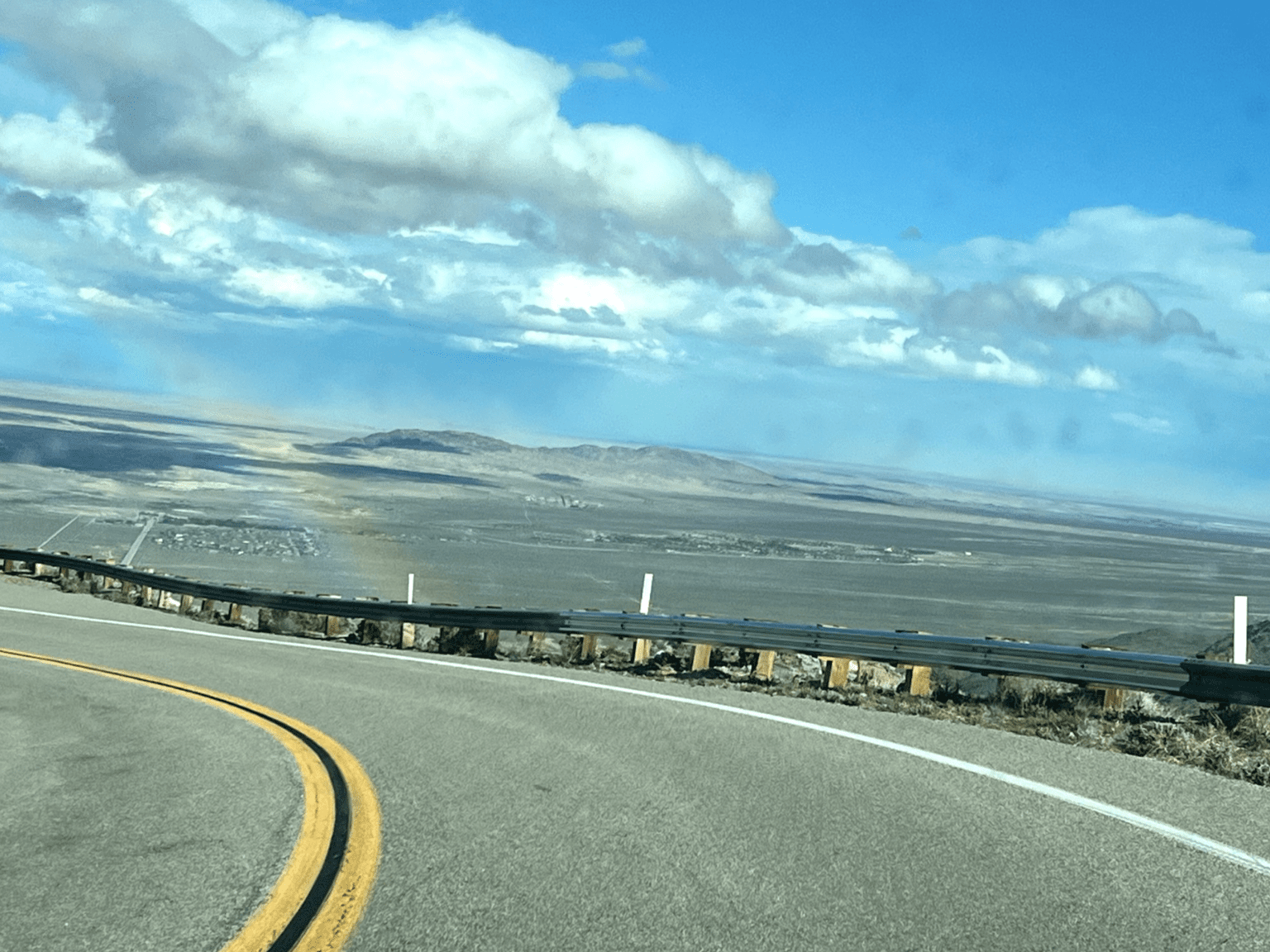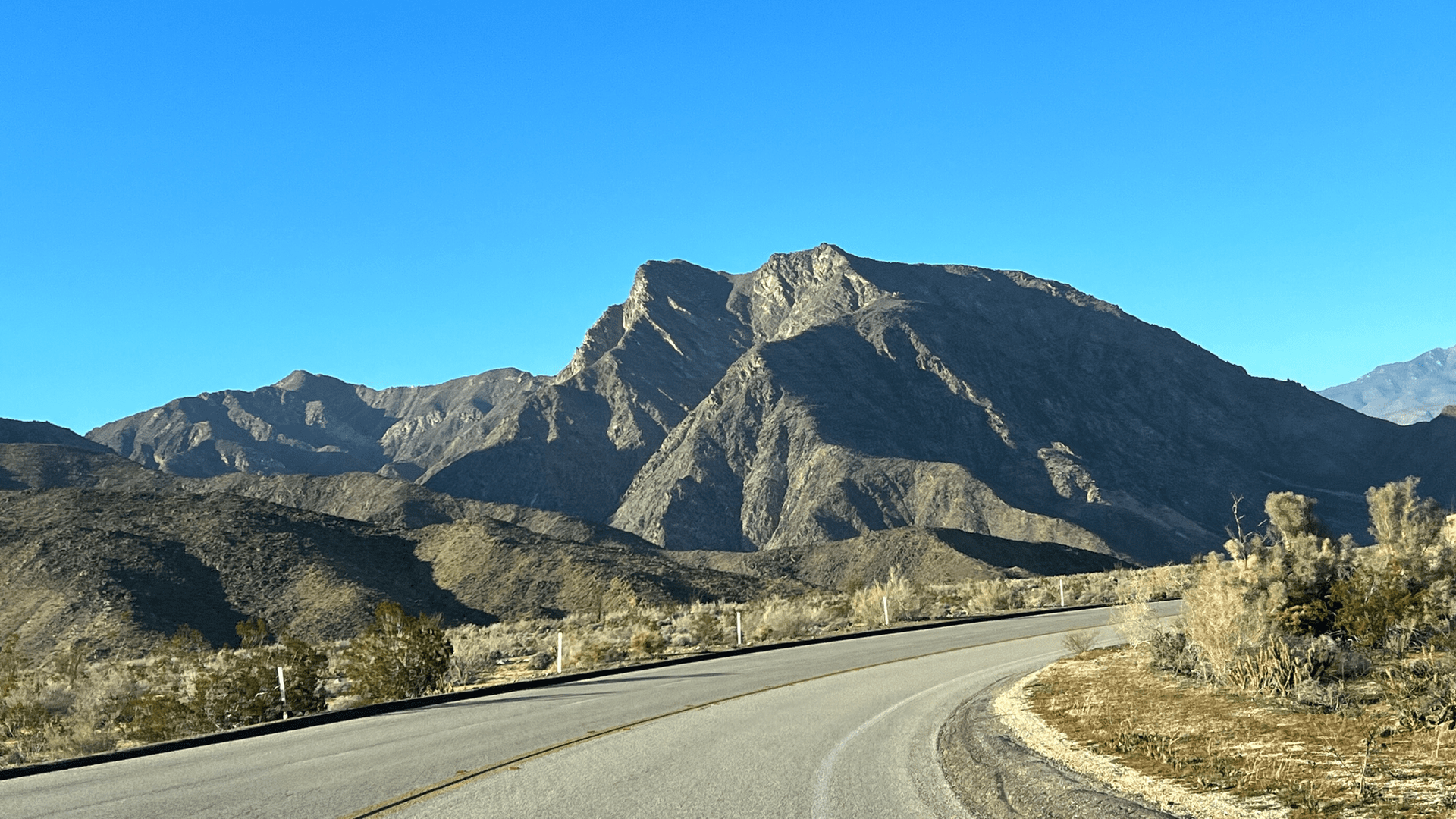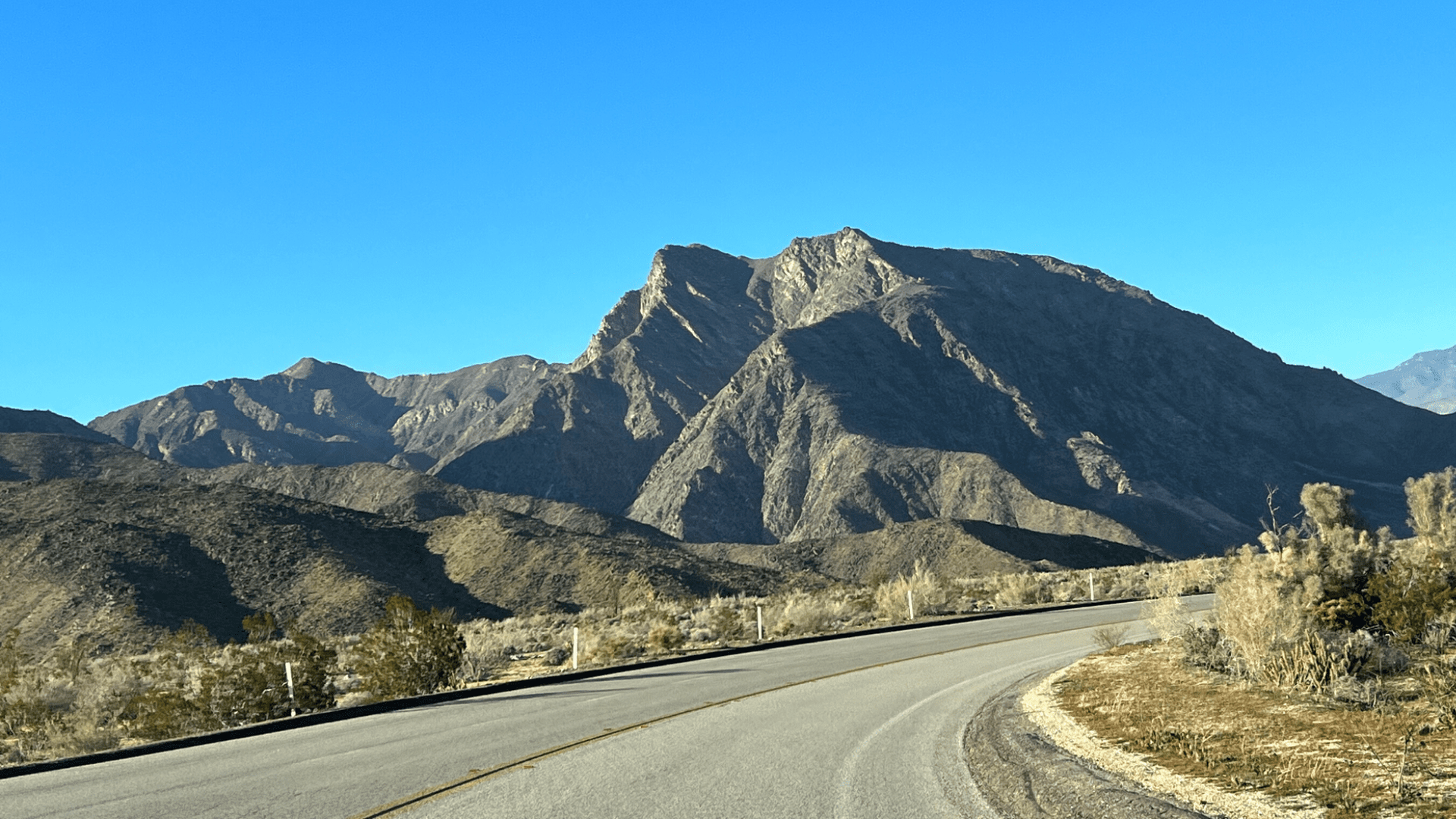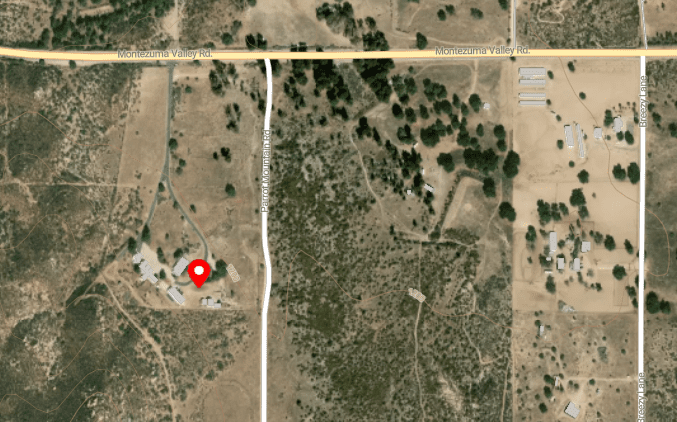San Diego County Desert Roads Through History
Share

Desert Roads Paved With the Past
San Diego County’s Road Department, now known as DPW’s Transportation Division, has played a crucial role in the development and expansion of transportation infrastructure in the region. From building highways and bridges to paving city streets and rural roads, the department has been responsible for constructing many vital transportation links throughout the county. However, some of the most important and unique roads built by the department can be found in the desert areas of the county.
- Montezuma Valley Road: One of the most scenic and historic roads in the region, Montezuma Valley Road winds up the San Ysidro Mountains from Borrego Springs to Ranchita. The road was constructed by the San Diego County Road Department in the 1950s and required the use of 160,000 tons of dynamite to carve a path through the rugged terrain. Today, the road offers stunning views of the surrounding landscape and is a popular route for tourists and outdoor enthusiasts.
- Borrego-Salton Sea Way: Formerly known as Truckhaven Trail, Borrego-Salton Sea Way is a vital transportation link that connects Borrego Springs with the Salton Sea. The road was renamed in 1968 after a coin toss settled a dispute between the Borrego and Salton City Chambers of Commerce. The road offers stunning views of the surrounding desert landscape and is an important route for commercial and recreational traffic.
- Yaqui Pass Road: The first improved road into Borrego Valley, Yaqui Pass Road was constructed in 1934 by the San Diego County Road Department. The road provided a vital transportation link for the region, and during World War II, it was used by the Marines to access Camp Ensign near Clark Dry Lake. Today, the road remains an important transportation link for the area and offers visitors breathtaking views of the surrounding landscape.
- County Highway S-2: Following the route of the Southern Emigrant Trail, County Highway S-2 is a historic road that offers visitors a glimpse into the region’s past. The road was initially a set of meandering, sand-bound tracks, but in the 1950s, it was improved and paved to provide a vital transportation link between Imperial County and San Diego County. The road is also a popular route for tourists and outdoor enthusiasts, offering stunning views of the surrounding landscape.
Overall, the roads built by San Diego County’s Road Department in the desert areas of the county have played a crucial role in the region’s development and expansion. Each road has its unique history and offers visitors a glimpse into the character and identity of the region. Whether you’re a history buff, an outdoor enthusiast, or simply looking for a scenic drive, the roads of the region have something to offer for everyone.
Montezuma Valley Road: Carving a Way Up the Mountain

Montezuma Valley Road is a notable example of the county’s road-building prowess. The road climbs up San Ysidro Mountain from Borrego Springs to Ranchita, offering stunning views of the surrounding desert landscape.
However, until the grade into Borrego Valley was completed, the road stopped at “Verruga”, which was later renamed Ranchita. To access the valley at that time, people had to use Yaqui Pass Road, which was many miles away. Construction of Montezuma Grade began in 1954 and took nearly 10 years to complete. Foremen Ben McManama and Carl Randall were often the only County employees on the job, supervising prisoners from Montezuma Honor Camp.
They used 160,000 tons of dynamite to carve a way down San Ysidro Mountain, an impressive feat of engineering.
Yaqui Pass Road: The First Improved Road into Borrego Valley

Yaqui Pass Road is another important road in the region. It was the first improved road into Borrego Valley, and construction from Julian Highway/Kane Spring Road, now Highway 78, was completed in 1934. During World War II, Yaqui Pass was used by the Marines to get to Camp Ensign, near Clark Dry Lake.
Yaqui Pass Road played a significant role in the development of the Borrego Valley and surrounding areas. Before the road’s construction, the region was only accessible via rugged and sometimes dangerous trails. The road, which was an improvement over these trails, was constructed by the San Diego County Road Department in the early 1930s.
The construction of the road involved significant engineering challenges due to the difficult terrain, including steep grades and sharp curves. Despite these challenges, the road was completed in 1934, connecting Borrego Valley with Julian Highway/Kane Spring Road, now Highway 78. This new link allowed for easier access to the Borrego Valley, which was crucial for the area’s agricultural and economic growth.
During World War II, Yaqui Pass Road gained strategic importance for military purposes. The Marines used the road to access Camp Ensign, which was located near Clark Dry Lake. The camp was used for training and was an important location for defense-related activities. The road’s construction and improvement made it possible for the military to move personnel and equipment through the region more efficiently.
In addition to its military and economic significance, Yaqui Pass Road is also a popular scenic drive for tourists and locals. The road offers stunning views of the surrounding landscape, including the Anza-Borrego Desert State Park, the Cuyamaca Mountains, and the San Jacinto Mountains.
Today, Yaqui Pass Road remains an important transportation link for the Borrego Valley and surrounding areas. It has been upgraded and maintained over the years to meet the demands of increased traffic and changing transportation needs. As one of the region’s earliest and most important roads, Yaqui Pass Road continues to be an essential part of the area’s cultural and historical heritage.
Borrego-Salton Sea Way

Borrego-Salton Sea Way is an interesting example of how roads can come to be named. Originally named Truckhaven Trail, both Borrego and Salton City Chambers of Commerce disliked the name. In January 1968, Robert Cozens, Board of Supervisors chairman, suggested the name Borrego-Salton Sea Way. But the Salton City Chamber of Commerce preferred Salton-Borrego Sea Way. A flip of a coin settled the issue. “Seaway” was originally rejected because it implied a shipping route. Sea Way was preferred because it meant the route to the Salton Sea.
According to Diana Lindsay, author of Anza-Borrego A-Z, the county sign painter in 1968 didn’t realize the difference and made the street sign “Seaway.” The error has never been corrected. Even today, the one-word “Seaway” still appears in the Road Register, Sign Index and on the Street Name Signs.
Highway S-2: Following in the Footsteps of the Gold Rush

Highway S-2 has several names: San Felipe Road, Great Overland Stage Route of 1849, Sweeney Pass, and Imperial Highway. It followed much of the route of the Southern Emigrant Trail, which began during the Gold Rush of the 1850s, and the old Butterfield Mail route, which began in 1851. The Imperial Highway Association, formed in 1929, urged the paving of the old Butterfield route. Imperial County did the first paving, from Ocotillo to the San Diego County line. From there to the bottom of Sweeney Pass, it was a set of meandering, sand-bound tracks. In 1951, County engineers designed and constructed the route along the hillsides and down the pass, but the road was still unpaved for several years. In 1953, a group of property owners lobbied the Board of Supervisors for road improvements, which finally came in 1959-61. The petitioners also asked for a name change, from Imperial Highway to the Great Overland Stage Route of 1849. The Supervisors agreed, despite the fact that the Overland Mail Route was never known as “Great,” the route was not “Southern,” and it didn’t exist in 1849.
Labor from the Backcountry Prison Camps
In the first half of the last century, there were several prison camps in the backcountry that provided much of the labor for road construction in the desert. These camps were established as a way to reduce costs for the county and to rehabilitate prisoners. The prisoners were often sent to work on road crews and perform other types of manual labor. The use of prison labor in road construction continued until the 1960s when it was deemed unethical.
The use of prison labor in road construction was a common practice in the United States during the first half of the 20th century. San Diego County was no exception, and several prison camps were established in the backcountry to provide labor for road construction in the desert.
One of the most notable prison camps in the region was the Montezuma Honor Camp, located near Warner Springs. The camp was established in the 1930s as a way to reduce the costs of road construction for the county and to provide rehabilitation for prisoners. The prisoners were housed in tents and barracks and were required to perform manual labor, such as clearing brush, building roads, and constructing firebreaks.
The use of prison labor in road construction was not without controversy. Some argued that it was a form of modern-day slavery and violated prisoners’ rights. Others, however, saw it as a way to provide rehabilitation and to reduce the cost of public works projects.
The use of prison labor in road construction continued until the 1960s, when it was deemed unethical. The Civil Rights Movement and growing public awareness of the issue led to the elimination of prison labor in many parts of the country. Today, road construction projects in San Diego County are completed by unionized workers or private contractors.
While the use of prison labor in road construction is no longer acceptable, the legacy of these camps and their impact on the region’s history and development cannot be ignored. The labor provided by the prisoners was instrumental in the construction of many of the region’s most important roads, including Montezuma Valley Road, Yaqui Pass Road, and County Highway S-2. These roads remain vital transportation links for the region, and their history is an important part of the area’s cultural heritage.

The Montezuma Honor Camp is located in San Diego County and sits at an elevation of 3,944 feet. Situated close to the hamlet of Ranchita, the camp is easily accessible and offers stunning views of the surrounding landscape.
Roads Paved With The Past
The roads of San Diego County’s desert areas have been paved with the past, with each road telling its own unique story of history, engineering, and human labor.
From the construction of Montezuma Valley Road with its 160,000 tons of dynamite to the renaming of Borrego-Salton Sea Way through a coin toss, the roads of the region offer a glimpse into the rich cultural and historical heritage of the area.
While the methods of road construction have changed over the years, the importance of these roads to the region and the stories behind them will continue to be an essential part of the area’s identity for years to come.null









